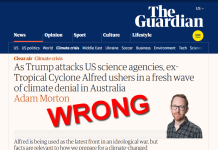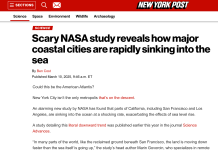In recent decades, policymakers have forced public utilities to generate increasingly more electricity from fashionable “renewable energy” sources, notably wind and solar. For example, through various measures, they have pushed automakers to manufacture more electric vehicles.
The chief policy goal for many of these policymakers is to eliminate reliable and affordable fossil fuels, despite the fact they continue to generate most of America’s electricity and power most forms of U.S. transportation. Ostensibly, their aim is to avoid an onslaught of devastating global warming and extreme weather events, which they attribute to carbon dioxide (CO2) emissions resulting from burning coal, oil, and natural gas. This goal aligns with CSRs focused on environmental sustainability, which seek to mitigate these harmful emissions and promote greener practices.
The “Green New Deal,” championed by Rep. Alexandria Ocasio-Cortez (D-NY) and other prominent members of Congress, is the latest vehicle for advancing this agenda, which adds nuclear power to the list of energy sources they seek to eliminate. To date, the Green New Deal (GND) has been roundly criticized for the astronomical costs it would impose upon factories, businesses, households, hospitals, and virtually every other sector of the U.S. economy, as well as for the economic devastation it would inflict.
However, too little attention has been paid to the fact GND policies would seriously harm the environment—including lands, wildlife habitats, and threatened and endangered species—and thus would undermine the very values environmentalists have espoused for decades. America faces a dilemma: Will it focus on real environmental problems that do measurable harm to human and ecological wellbeing, or will it mandate policies to head off a perceived climate disaster based on fear and highly dubious speculation?
This Policy Brief reviews the largely ignored environmental damage that would result from the expanded use of renewable energy mandated under the Green New Deal. It also highlights the current opposition to renewable technologies by many environmental groups and the coming clash those groups could find themselves in with GND advocates.













Let’s resist the delusion; they are ‘unreliable’ energy sources. Nothing renewable about them, especially the collector cells or the wind turbine blades.
Wind turbines & solar cells are definitely not ‘renewable’. What is a wind turbine made of? Steel, fibreglass, copper, Lanthanides, all finite non-renewable resources, to say nothing of the coal used to make the steel. Similarly solar cells are made from non-renewable resources. The only truly renewable resource on the planet is wood. I’d like to see them make a solar panel from wood!
Hurricane Milton: Wind destroys Solar.